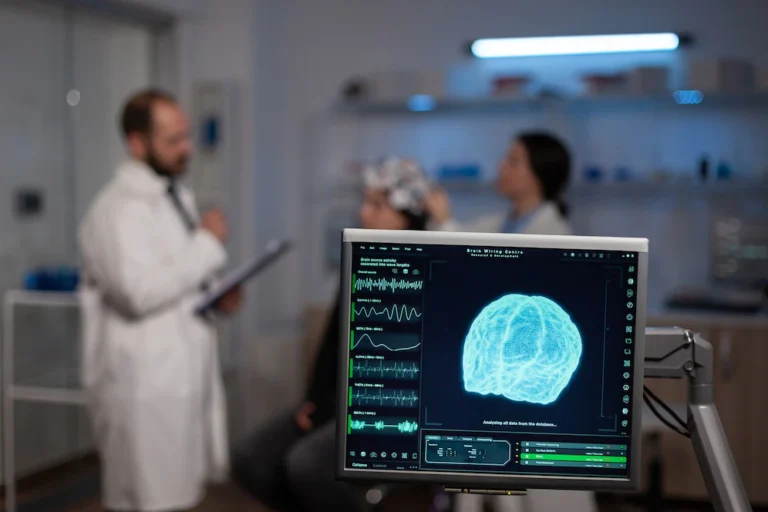
Understanding Kolltadihydo: Symptoms and Diagnosis
Kalltadihydo is a rare and complex condition that presents a unique set of challenges for both patients and healthcare professionals. Individuals affected by kolltadihydo often exhibit a range of symptoms that can vary greatly in intensity and manifestation. Common symptoms include persistent fatigue, joint pain, and neurological issues such as dizziness and cognitive disturbances. These symptoms can severely impact the quality of life, making it essential to recognize and understand them early on.
The diverse nature of these symptoms can lead to a delay in diagnosis, as they may mimic those of other common medical conditions. Healthcare professionals often employ a variety of diagnostic tools to identify kolltadihydo. Initially, a thorough medical history and a comprehensive physical examination are conducted. Following this, healthcare providers may utilize blood tests, imaging studies, and even specialized assessments to rule out other conditions that may present similar symptoms. The importance of an accurate diagnosis cannot be overstated, as the effectiveness of subsequent treatments largely depends on identifying kolltadihydo correctly.
One of the challenges in diagnosing kolltadihydo is its rarity, which means that many healthcare professionals may not be familiar with its characteristics or the nuances of its presentation. This can lead to misdiagnosis or inappropriate treatment plans. Furthermore, symptoms may develop gradually, and their onset can be subtle, complicating the recognition of the condition. Thus, a multidisciplinary approach involving specialists may be required to achieve a definitive diagnosis. By enhancing awareness of the symptoms associated with kolltadihydo, patients and healthcare providers can collaborate effectively to ensure accurate identification and proper management of the condition.
Current Treatment Options for Kolltadihydo
Treatment options for kolltadihydo are diverse, encompassing both traditional medical interventions and alternative approaches. Given the rarity of this condition, it is imperative for individuals affected by kolltadihydo to collaborate with healthcare professionals to develop a customized treatment plan.
Traditional medical interventions primarily consist of symptom management. Many healthcare providers recommend pharmacological treatments tailored to alleviate specific symptoms experienced by patients. For instance, analgesics may be prescribed for pain management, while anti-inflammatory medications can help reduce associated swelling. Additionally, patients may also benefit from corticosteroid injections, which aim to provide relief from inflammation and other symptoms. While these treatments can significantly improve quality of life, it is important to note that they may not directly address the underlying cause of kolltadihydo.
On the other hand, alternative therapies are gaining traction among some patients seeking comprehensive management of their condition. Practices such as acupuncture, physical therapy, and yoga have shown varying levels of success in enhancing overall well-being. These approaches emphasize holistic health, aiming to improve physical and mental states, which can indirectly alleviate some of the distress associated with kolltadihydo.
In recent years, emerging therapies have also drawn attention. Research into gene therapy and regenerative medicine is ongoing, with some studies suggesting potential breakthroughs for rare conditions like kolltadihydo. While these treatments are still in experimental stages, they hold promise for future applications that may offer more effective solutions.
Overall, individuals seeking treatment for kolltadihydo should carefully evaluate their options. A multi-faceted approach, incorporating both traditional medical methods and alternative therapies, may prove beneficial in enhancing the management of this complex condition.

Research and Future Perspectives: Can Kolltadihydo Be Cured?
Research into kolltadihydo has progressed significantly, with scientists and medical professionals dedicating extensive resources to uncover its underlying mechanisms. Although it is categorized as a rare condition, the need for a comprehensive understanding of kolltadihydo is critical, especially in addressing the concerns of affected individuals and their families. Current studies are focusing on various aspects, such as genetic predispositions, environmental factors, and potential biological pathways that contribute to the onset and progression of the disease.
Recent advancements in medical science have sparked hope among researchers in the quest for a cure. Innovative therapies, including gene editing and regenerative medicine, are being explored as potential avenues to alleviate the symptoms or even reverse the condition. These groundbreaking approaches aim not only to treat the impacts of kolltadihydo but to target the root causes directly. Furthermore, clinical trials are integral in this pursuit; by enrolling patients and collecting baseline data, researchers can gauge the efficacy of new treatments and make informed decisions based on real-world outcomes.
The role of patient data cannot be overstated. By analyzing the information gathered from those living with kolltadihydo, researchers are better equipped to identify patterns and discern which therapeutic strategies may be most effective. As collaborations between academic institutions, pharmaceutical companies, and advocacy groups grow, more comprehensive studies will pave the way for understanding the complexities of this condition and will refine the approaches toward a potential cure.
Ultimately, while the question of whether kolltadihydo can be cured remains open, the ongoing research and innovative therapies provide a promising outlook for future treatment options. The field is evolving, and as new findings emerge, the possibility of finding an effective cure may soon become tangible.
Living with Kolltadihydo: Patient Experiences and Support
The journey of living with kolltadihydo can be both uniquely challenging and transformative for individuals affected by this rare condition. Personal stories from those navigating daily life with kolltadihydo reveal a landscape marked by unpredictable symptoms and constant adjustments. Many patients experience physical difficulties that impact their mobility and overall quality of life, often necessitating a thorough understanding of their condition and fostering a proactive approach to management.
As patients share their testimonials, it becomes evident that emotional resilience is paramount. One such individual, Jordan, recounts the initial diagnosis and how it sparked a wave of fear and uncertainty. Nevertheless, through a network of support, including family, friends, and healthcare providers, Jordan found solace and strength. Joining support groups tailored for individuals with rare diseases has been invaluable, providing not just a platform for sharing experiences but also practical advice. The sense of community fosters understanding and combats the isolation often felt by those living with rare conditions like kolltadihydo.
Engaging with mental health professionals has also surfaced as a crucial strategy for many patients. Cognitive-behavioral therapy and mindfulness practices have proven beneficial in managing stress and anxiety related to their condition. Adapting to a new lifestyle often includes physical therapy and adapting daily routines, emphasizing the importance of staying active within one’s limits. Furthermore, nutrition plays a vital role in managing overall well-being, as patients learn which foods best support their health.
In conclusion, living with kolltadihydo necessitates a multidimensional support system and a focus on mental and physical health. The shared experiences of patients underline the importance of nurturing an environment of understanding and strength, vital for coping effectively with this challenging condition.


